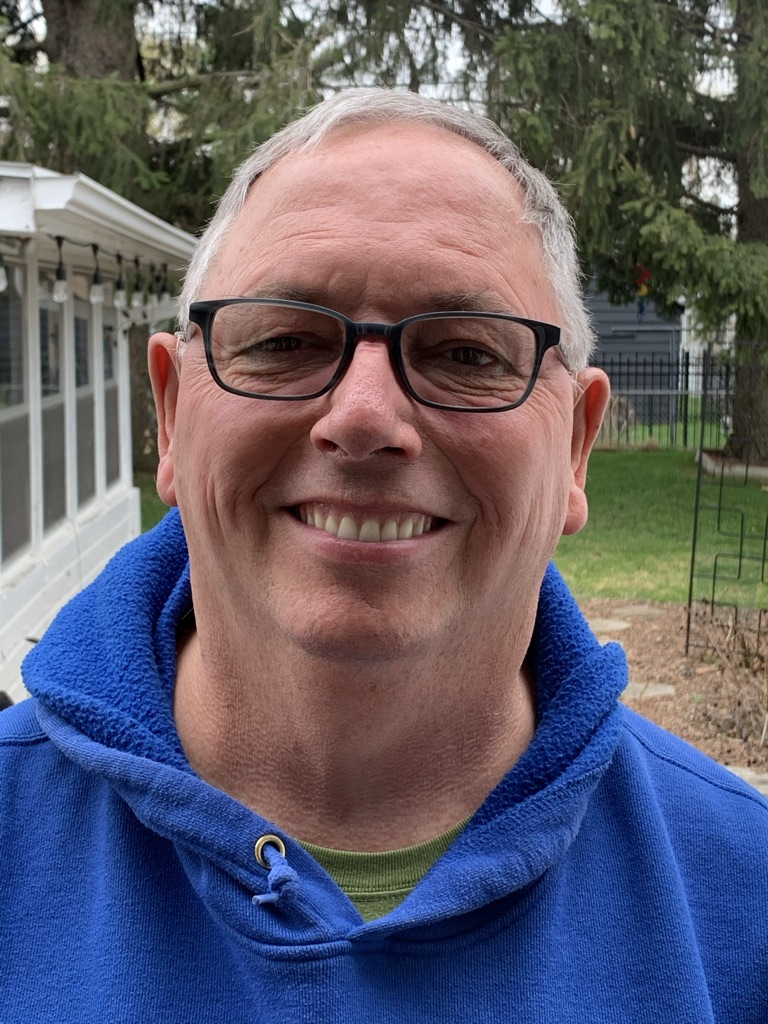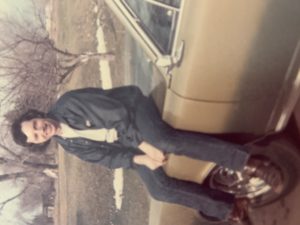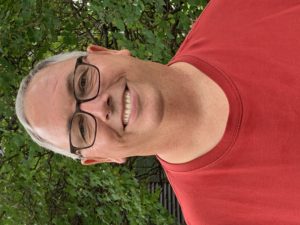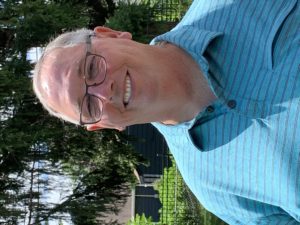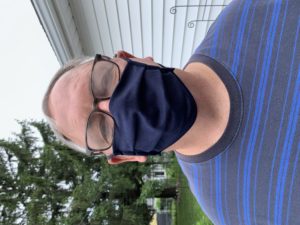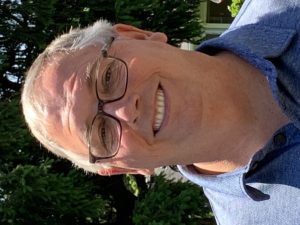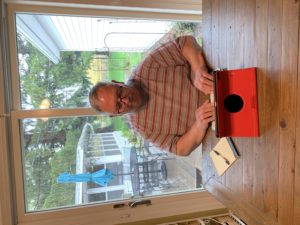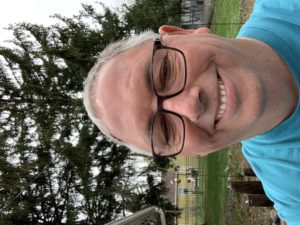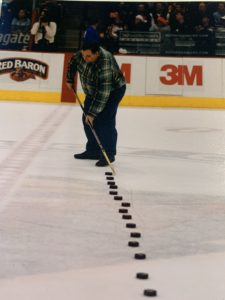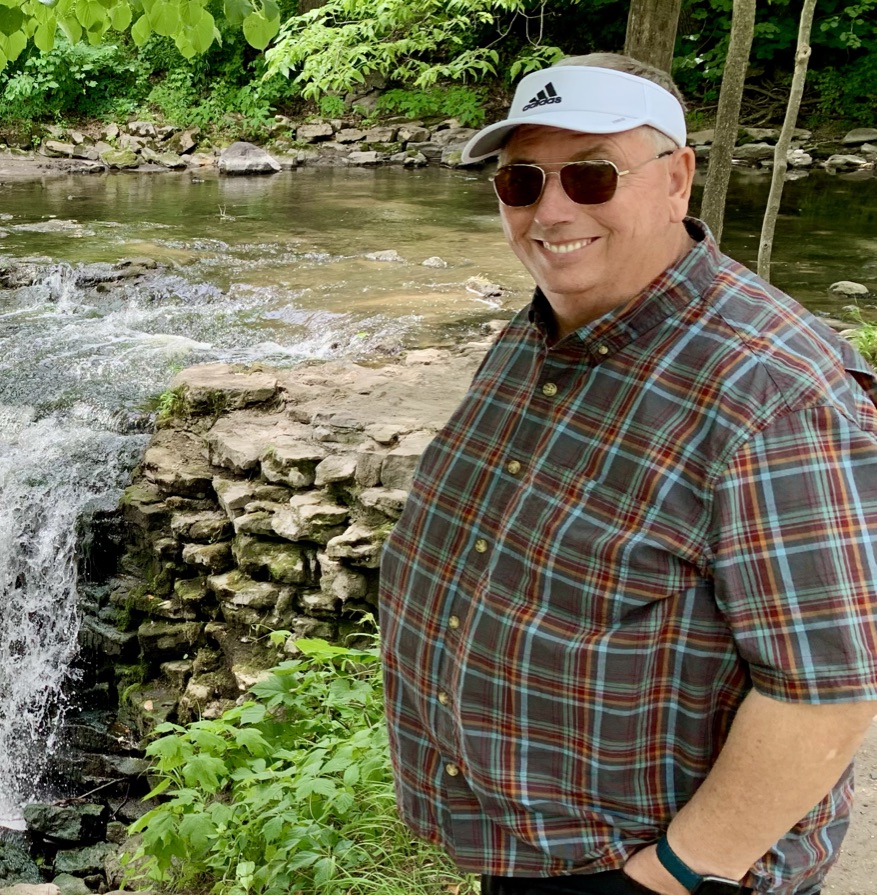
While hiking in Flandrau State Park in New Ulm on June 22, 2021, Linda and I talked about how the pandemic no longer dominates our thoughts. Not like the pandemic didn’t happen, more like the pandemic is in the rear view mirror and we’re moving forward. As we walked, apparently I got pretty quiet. For some reason, as I was thinking about life moving on after the pandemic, the story of Robert Johnson selling his soul to the devil came to mind.
Almost exactly two years earlier, June 23, 2019, (yes I looked it up). Linda and I were headed north, towards home, up the east side of the Mississippi River, eight days into our several thousand mile road trip along the Great River Road route. We found ourselves in a Hampton Inn in Clarksdale, Mississippi, on Sunday night, hungry after a long day on the road. Clarksdale, Mississippi is the home of the crossroads where Robert Johnson is said to have sold his soul to the devil.
There were only a couple cars in the parking lot of that Hampton Inn. Off in the distance to the west you could see the storm we’d heard about on the radio coming toward us. We checked in, and asked the clerk if there was any chance there was some place to eat with live blues music. In case you didn’t know Clarksdale is considered literally the home of the blues. Most of the famous blues artists came from somewhere within a hundred miles of Clarksdale, Mississippi.
Understand, first of all, Clarksdale has a population of about 15,000, less than half the population of Roseville, MN where I grew up. Remember also it was a Sunday night. The hotel clerk said there were three restaurants in town which had live blues; however, two of them were closed on Sundays.
The place that was open was Levon’s. She was not sure they had music on Sundays. We got directions and off we went. It was just a couple miles away. As we drove through town it was apparent the town had seen better days. As we got closer to Levon’s, the houses, businesses and schools were sadly in rough disrepair. We almost turned around as we approached the old weather worn building with a small sign saying “Levon’s”.
There were a couple of old men sitting in old chairs in front. The very small parking lot was as much dirt as it was broken pavement. We swallowed hard and went inside.
Off to the left was an elderly gentleman playing the hell out of a very nice looking acoustic guitar with a tip jar right in front of him. I guess he was in his mid to late seventies. My gosh he played well. We stood in the doorway for several minutes, before one of the staff held up a finger indicating he’d be right over as soon as he finished hearing the story he was being told.
There were only a couple tables with people sitting at them. We were seated and our drink order was taken. Then a single menu with only a couple items listed was given to us.
We asked the guy who sat us down what he recommended. He was about as laid back and casual as you could imagine. I don’t remember the name of what he recommended but it looked like some sort of gumbo only with big shrimp in it. OMG it was delicious. By the time we got our food the place was filling up. Near as I could tell everyone who came in was a regular, most of them greeted by name, handshakes and or embraces.
The guy playing the guitar had started to sing the blues. He was very good. Yes, of course, I put a twenty dollar bill in the tip jar.
The next morning as we left town we drove past a large marker on the corner of Highway 49 and Highway 61 indicating this was the site of the famous Crossroads.
The legend is: Robert Johnson was an embarrassingly bad guitar player. At age 19 (1929) he left, some say was kicked out of Robinsonville, Mississippi and traveled 45 miles to Clarksdale, Mississippi to the Crossroads of Highway 61 and Highway 49. Which is where he met the Devil at midnight and made a deal to sell his soul in exchange for being able to create the blues well enough to become famous.
Robert Johnson, in fact did leave Robinsonville in 1929 not knowing how to play the guitar and came back two years later a guitar virtuoso. There are only forty-one songs known to be recorded in two sessions (29 different songs, some recorded twice) . Many of them are now blues classics. They were recorded in 1935 and 1936. He died a couple years later in 1938 at the age of 29.
The rumor was, the devil kept his end of the bargain and then the devil took his due. The reality seems to be Robert Johnson from the time he was like 14 he could play the harmonica well and made his way singing and playing in bars and street corners.
He went to Clarksdale where he lived with his cousin, who was a good guitar player. It is thought his cousin taught Robert how to play and practiced with him often. Robert had unusually long fingers so he could do things with the guitar that most people could not.
Pre-pandemic, life was moving along as life does. The pandemic hit and for the next fifteen months, for better or worse, life was different. Vaccines were a game changer. We now stay in hotels and eat in restaurants which made taking long hikes in multiple state parks practical.
Selling one’s soul to the devil seems a tad extreme but I know for sure, taking time for a walk in a state park thinking about the past and the future is a nice way to spend some time.
The closer you look the more one sees.
